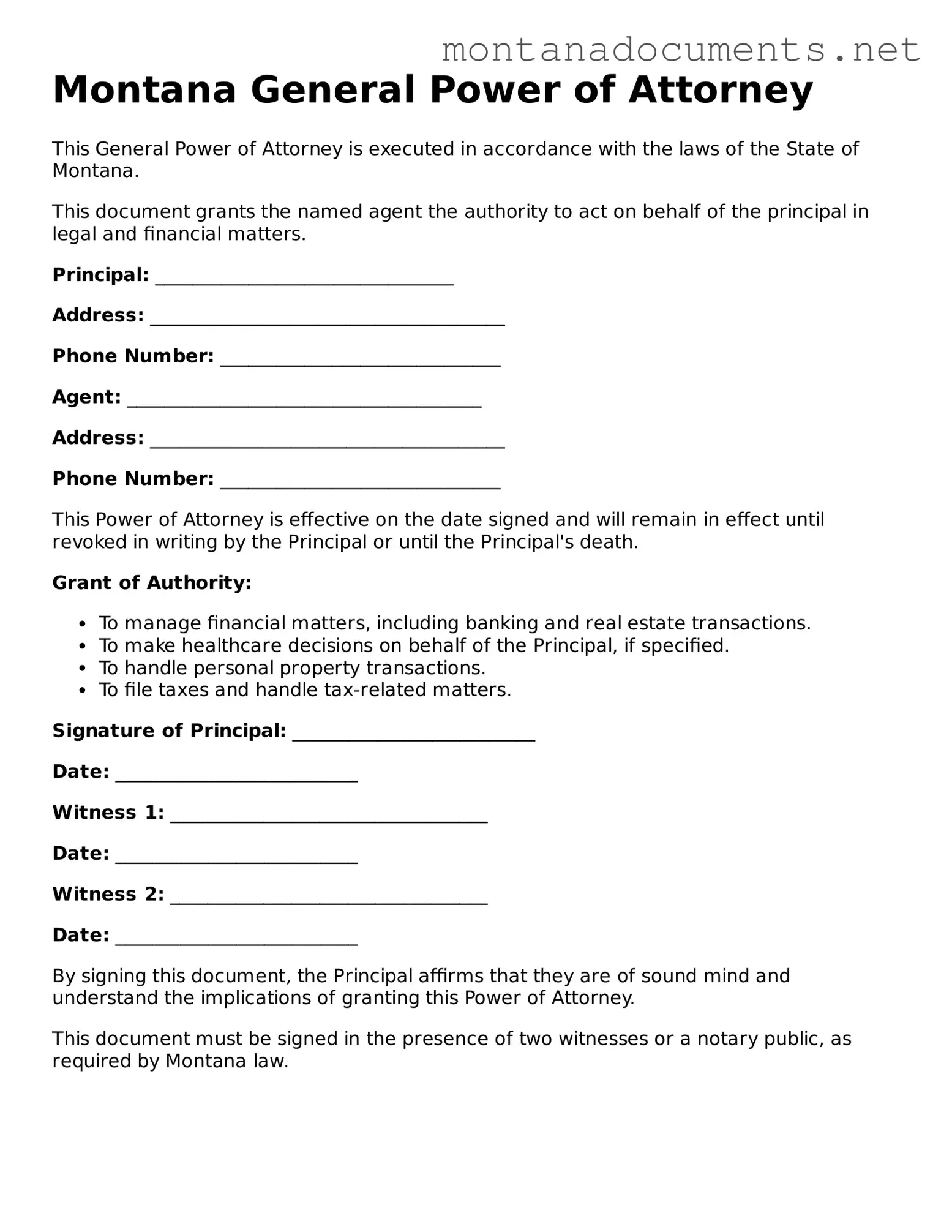The Montana General Power of Attorney form shares similarities with the Durable Power of Attorney. Both documents allow an individual to designate another person to make decisions on their behalf. However, the key difference lies in durability. A Durable Power of Attorney remains effective even if the principal becomes incapacitated, while a General Power of Attorney typically ceases to be valid under such circumstances. This feature makes the Durable Power of Attorney a critical tool for long-term planning.
Another document comparable to the Montana General Power of Attorney is the Medical Power of Attorney. This form specifically authorizes someone to make medical decisions for an individual when they are unable to do so. While the General Power of Attorney can cover a wide range of financial and legal matters, the Medical Power of Attorney focuses solely on healthcare decisions. This specialization is essential for ensuring that medical preferences are honored in times of crisis.
When preparing for a transaction, it is crucial to ensure that all parties are protected; this is where a Bill of Sale form comes into play. It acts as a legal contract that details the terms of the trade, including the condition and price of the item sold, ensuring that both the buyer and seller have clear documentation of the exchange. For further information about creating this important document, you can visit https://onlinelawdocs.com/bill-of-sale/.
The Limited Power of Attorney is another document that is similar to the Montana General Power of Attorney. Like the General Power of Attorney, it allows one person to act on behalf of another. However, the Limited Power of Attorney is restricted to specific tasks or situations. This can be particularly useful when a principal wants to give authority for a single transaction, such as selling a property, without granting broad powers.
The Springing Power of Attorney also shares similarities with the Montana General Power of Attorney. This type of document becomes effective only under certain conditions, typically when the principal becomes incapacitated. In contrast, the General Power of Attorney is effective immediately upon signing. The Springing Power of Attorney can provide peace of mind, as it ensures that authority is granted only when necessary.
The Revocation of Power of Attorney is related to the Montana General Power of Attorney in that it allows an individual to terminate the authority granted to an agent. While the General Power of Attorney empowers someone to act on behalf of another, the Revocation form serves as a safeguard, ensuring that the principal can regain control over their decisions. This document is essential for maintaining personal autonomy.
Similar to the Montana General Power of Attorney is the Financial Power of Attorney. This document specifically gives someone the authority to handle financial matters, such as managing bank accounts, paying bills, or making investments. While the General Power of Attorney can encompass financial decisions, the Financial Power of Attorney is tailored to address financial affairs exclusively, making it a useful option for those with specific financial management needs.
The Healthcare Proxy is another document that aligns with the Montana General Power of Attorney. This form designates someone to make healthcare decisions on behalf of an individual when they cannot do so themselves. Like the Medical Power of Attorney, the Healthcare Proxy focuses on medical decisions, but it may include broader directives regarding healthcare preferences. Both documents are vital for ensuring that an individual's health care wishes are respected.
Finally, the Trust Agreement bears some resemblance to the Montana General Power of Attorney. A Trust Agreement allows an individual to designate a trustee to manage their assets for the benefit of beneficiaries. While a General Power of Attorney grants authority to make decisions and act on behalf of the principal, a Trust Agreement establishes a legal entity to manage and distribute assets according to the principal's wishes. Both documents are essential tools for estate planning and asset management.
